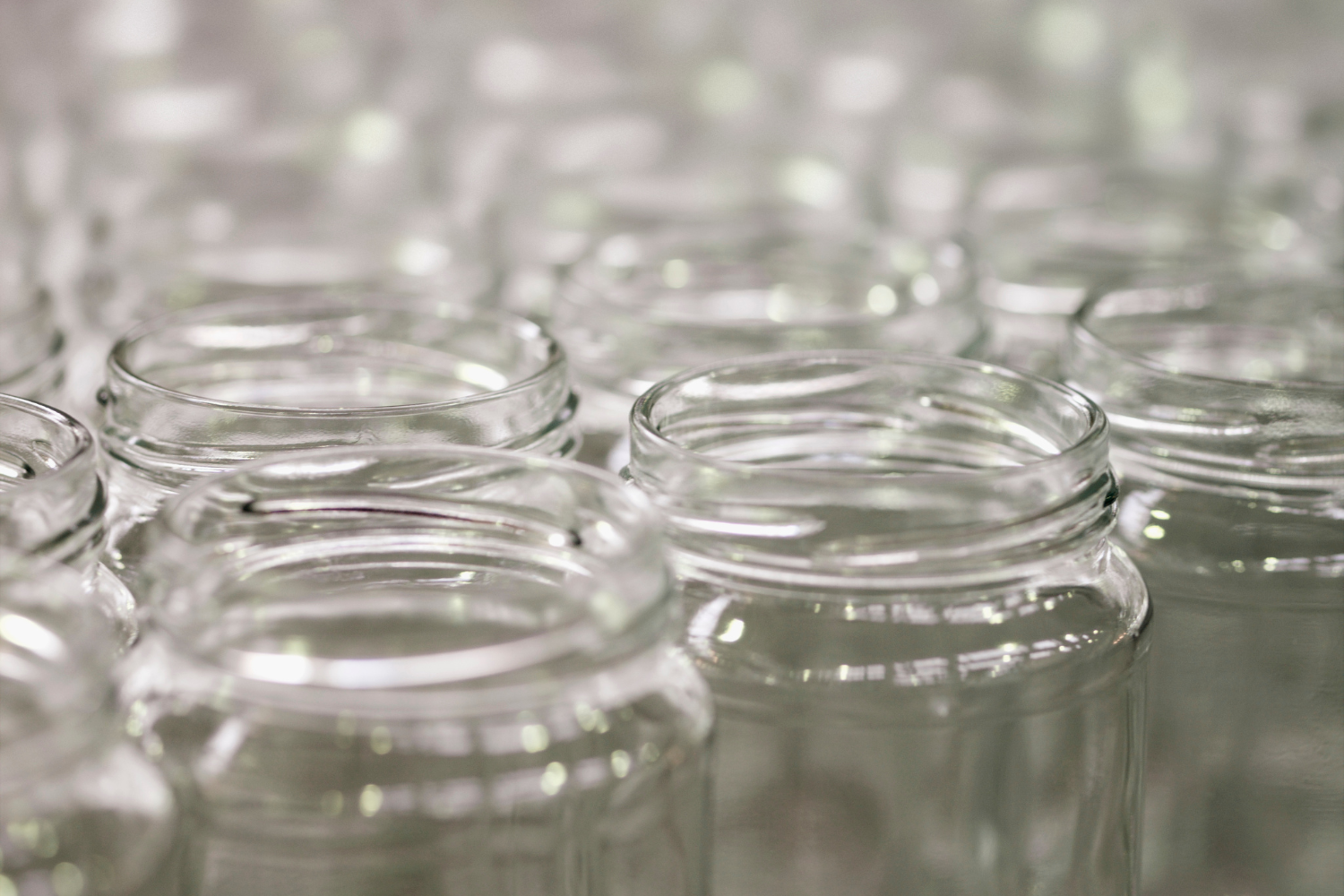When choosing the best packaging for your supplement business, the debate between glass container vs plastic container is essential. Plastic and glass containers play crucial roles in food packaging and storage, offering distinct advantages. While plastic food containers are lightweight and cost-effective, glass food storage containers provide durability and an eco-friendly option.
For businesses in the food industry, deciding between plastic and glass containers can impact transporting food, product preservation, and sustainability efforts. Understanding the strengths and limitations of each option helps you make the best choice for your brand.
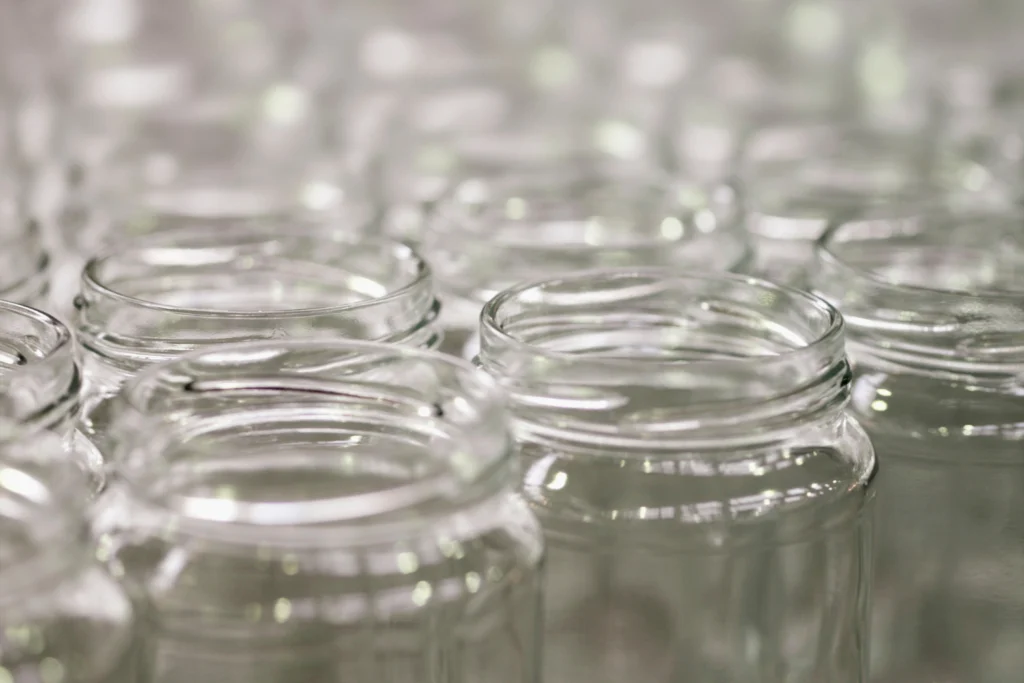
Why Choosing the Right Container Matters
Selecting the correct container for your supplements is crucial for preserving product quality and maintaining brand reputation. Choosing between a glass container vs plastic container can significantly impact your business and customer satisfaction.
The Role of Packaging in Product Quality and Brand Image
The type of food storage containers you choose directly affects the longevity and quality of your supplements. Glass containers offer a non-porous surface that prevents moisture and air from entering, which can degrade ingredients over time. This is especially important for items like tomato sauce and other perishable supplements. Moreover, plastic containers with tight seals, such as those made from high-density polyethylene (HDPE), can offer better protection against air and moisture, helping to preserve the supplement’s potency. However, lower-quality plastics may offer less protection.
Beyond protecting the product, packaging also serves as a reflection of your brand’s values. Choosing eco-friendly options like glass jars or recycled material can position your business as environmentally conscious, while plastic food containers might appeal to customers looking for affordability. The look and feel of your packaging create an immediate perception in the marketplace, influencing whether consumers see your brand as premium or cost-effective.
Regulatory Considerations for Supplement Containers
When choosing between glass or plastic for your supplement packaging, following FDA guidelines and other regulations is important. These rules ensure that food packaging materials are safe for storing supplements, preventing contamination from chemicals or potential health hazards. Plastic containers, for instance, need to meet standards for high-density polyethylene to be considered safe.
Proper container selection also ensures compliance with health and safety regulations, protecting both your business and your customers. Whether you choose glass bottles or plastic lids, adhering to regulatory requirements safeguards the integrity of your products and helps you avoid costly legal issues.
The Benefits of Using Glass Containers
Glass containers offer several advantages for supplement businesses, from better product protection to an upscale brand image. Let’s explore how glass food storage containers can benefit your business.
Superior Product Protection
One of the biggest reasons to choose glass containers is that they can keep supplements fresh and potent for longer periods of time.
Non-reactive Nature of Glass
Unlike plastic containers, glass doesn’t react with supplements, ensuring the purity and potency of your products. Its non-porous surface prevents chemicals or odors from leaching into your supplements, making it an ideal choice for maintaining ingredient integrity over time.
UV Protection
Another benefit of glass is its ability to block harmful UV rays, especially when using amber or tinted glass bottles. This UV protection is essential for supplements with sensitive ingredients that can degrade when exposed to light, preserving flavor and effectiveness.
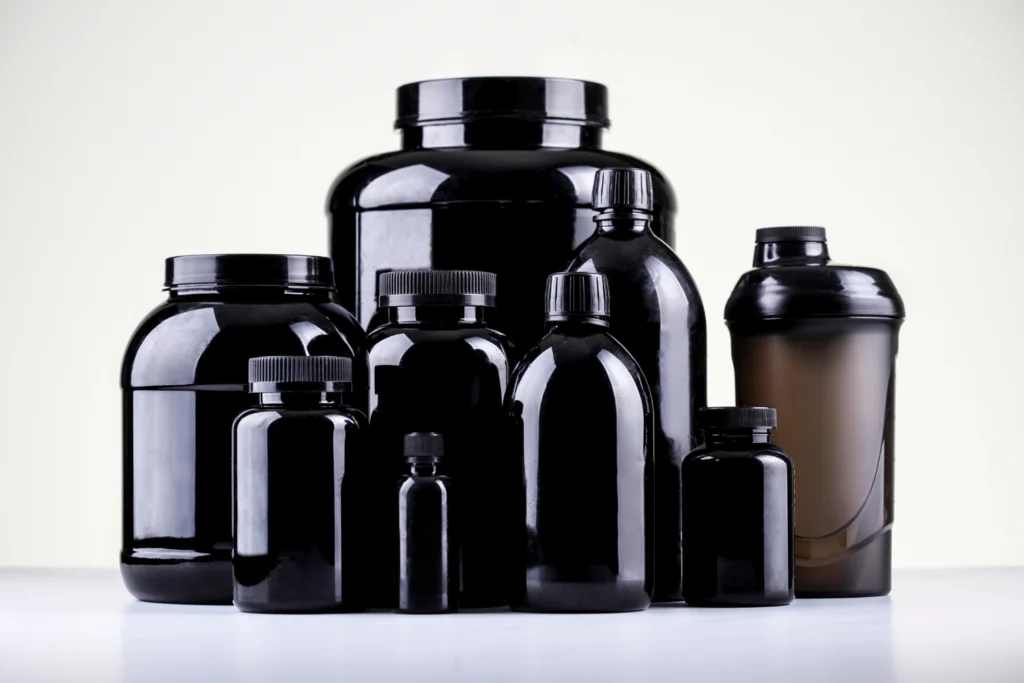
Premium Look and Feel
Beyond protection, glass jars give your supplements a more refined appearance, which can elevate your brand in consumers’ eyes.
The Perception of Quality
Glass containers are often associated with higher quality, giving your products a premium look and feel. Customers searching for top-tier supplements are more likely to choose products packaged in glass, as it signals a commitment to excellence and product safety.
Positioning Your Brand as Luxury or Eco-Friendly
In addition to conveying quality, glass containers align with luxury or eco-friendly branding. If your business targets consumers who value sustainability or natural products, glass food containers can help reinforce your brand’s values, attracting a dedicated customer base.
Sustainability and Environmental Impact
Glass containers offer significant sustainability benefits for businesses looking to minimize their environmental footprint.
Recyclability of Glass
One of the most appealing aspects of glass is that it’s 100% recyclable and can be recycled endlessly without losing its integrity. This makes it an excellent option for eco-conscious consumers who prefer recycled materials and want to reduce plastic waste.
Reduced Environmental Footprint
Compared to plastic containers, glass produces less environmental waste. Since it can be reused and recycled more efficiently, glass manufacturing has a lower environmental impact, helping businesses lower their carbon footprint while appealing to environmentally minded customers.
However, it’s worth noting that although glass is 100% recyclable and can be reused endlessly without losing its integrity, its production and transportation require significantly more energy than plastic, potentially increasing its carbon footprint depending on the scale of use.

The Drawbacks of Using Glass Containers
While glass containers offer many benefits, there are some drawbacks to consider, particularly when it comes to handling, cost, and design flexibility.
Fragility and Breakage Concerns
One of the main issues with glass food storage containers is their fragility, especially during transportation.
Challenges in Shipping and Handling
Glass containers are more prone to breakage than plastic containers, which can result in higher shipping costs and potential product loss. Special care is needed when transporting food in glass bottles or jars, increasing both packaging expenses and the risk of damage during shipment.
Weight and Cost Considerations
In addition to being fragile, glass presents challenges due to its weight and cost.
Heavier and More Expensive
Glass containers are heavier than plastic containers, which leads to increased shipping fees. This weight difference can also impact the handling and storing food efficiently. Furthermore, the production costs for glass manufacturing tend to be higher, making glass containers a more expensive option overall for businesses.
Limited Design Flexibility
Another limitation of glass is its reduced flexibility in terms of customization and design.
Fewer Customization Options
Glass offers fewer design options than plastic containers, which can be molded into various shapes and sizes. Plastic products provide greater customization possibilities, making it easier to create unique, branded food packaging designs that stand out. This lack of flexibility can be a disadvantage for businesses wanting more creative control over their packaging.
The Benefits of Using Plastic Containers
Plastic containers offer several advantages, especially in terms of cost, durability, and convenience. These features make them a popular choice in the supplement industry.
Cost-Effectiveness and Availability
One of the main reasons businesses choose plastic containers is their affordability and easy availability.
Lower Production and Shipping Costs
Due to their lightweight nature, plastic containers are cheaper to manufacture and ship. This makes them an economical option for businesses needing to scale production. Their high-density polyethylene composition also allows for efficient, large-scale production runs, keeping costs down.
Durability and Flexibility
In addition to being cost-effective, plastic is known for its durability and adaptability.
High Resistance to Breakage
Plastic containers, especially those made from durable materials like HDPE or PET, are highly resistant to breakage, making them ideal for transporting food and supplements. Unlike glass containers, plastic can withstand impacts during shipping and handling, reducing product loss and damage.
Variety of Design Options
Plastic food containers offer a wide range of design possibilities, allowing businesses to create custom packaging. Whether you need different shapes, sizes, or colors, plastic products are highly flexible and can be molded to match your brand’s needs.
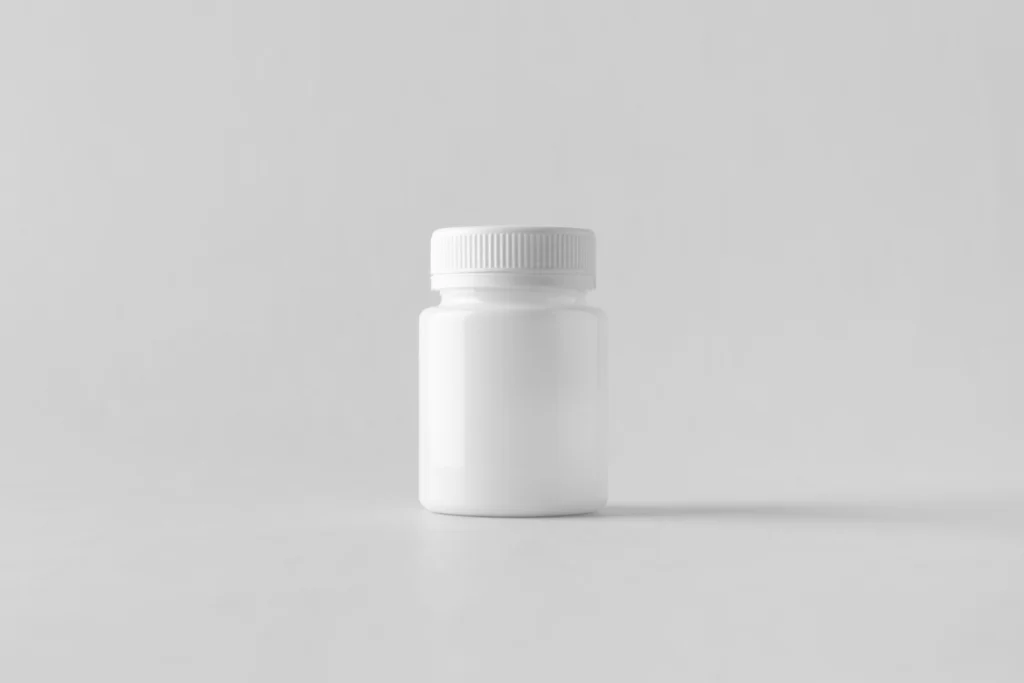
Consumer Convenience
For consumers, plastic containers offer lightweight, easy-to-use packaging that fits their busy lifestyles.
Lightweight and Portable
Plastic is lighter and more portable than glass, making it easier for consumers to handle, especially for on-the-go products like protein powders or supplements in capsule form. Its durability and tight seal prevent spills and make it ideal for everyday use.
The Drawbacks of Using Plastic Containers
Despite their advantages, plastic containers have several downsides, especially regarding potential chemical reactions and environmental concerns.
Potential Chemical Reactions
Some plastics may pose health risks when used for supplement packaging, which is essential to consider.
Chemical Leaching Risks
Certain types of plastic, such as those containing BPA, can react with supplements, potentially altering their taste or reducing their efficacy. Fortunately, many BPA-free plastics are available and widely used in supplement packaging to prevent this, making them safer for long-term storage.
Environmental Impact
While plastic containers are recyclable, they also contribute to environmental challenges.
Plastic Waste and Recycling Challenges
Although plastic can be recycled, many plastic containers end up in landfills due to low recycling rates. The production of plastic products leaves a significant environmental footprint, and their disposal often results in long-term plastic waste issues that are difficult to manage.
Lower Perceived Quality
Another drawback of plastic is how it is viewed by consumers in the health and wellness space.
Consumer Perception of Plastic
Compared to glass containers, plastic is often considered a lower-quality option, which can affect how your brand is perceived. Customers may associate plastic with a less premium or less sustainable product in the health and wellness market, potentially impacting your brand image.
Factors to Consider When Choosing Between Glass and Plastic
Several factors, from product stability to cost and brand image, can help you choose the best option for your supplement business when deciding between glass containers and plastic containers.
Product Type and Stability
The type of supplement you’re packaging and its sensitivity to the environment should guide your decision.
Does Your Product Require UV Protection?
If your supplements are sensitive to light, like certain vitamins and herbal extracts, glass bottles—especially tinted ones—offer better UV protection than plastic containers. This helps preserve the product’s potency and extend its shelf life.
Reactivity with Packaging Materials
It’s also important to consider how your product might react with plastic products. Certain ingredients may break down or alter when exposed to plastic, so it’s essential to evaluate whether glass containers may be a safer alternative for your formulation.
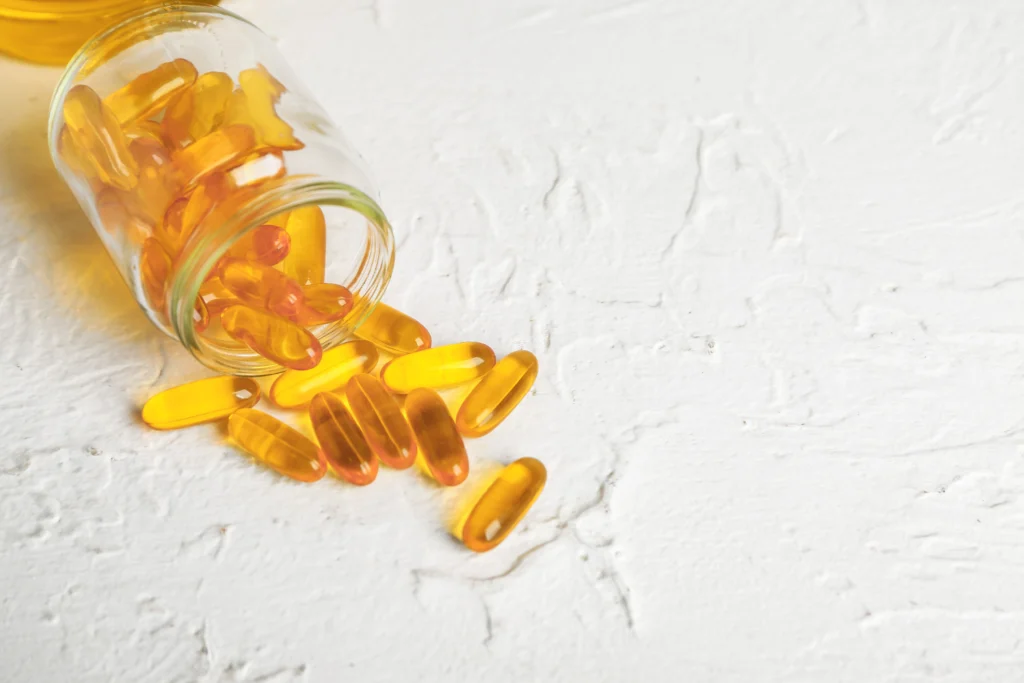
Budget and Shipping Costs
Your overall budget and shipping expenses are key when selecting glass and plastic containers.
Cost per Unit and Shipping Weight
Glass is typically more expensive to produce and ship because of its weight and fragility. While plastic containers are cheaper to manufacture and cost less to ship, glass containers may add a premium feel to your product. Calculate these costs to see which option fits your budget.
Brand Positioning and Target Audience
Your brand’s image and the market you’re targeting can also influence your packaging decision.
Are You Targeting Eco-Conscious or Premium Consumers?
If your brand focuses on eco-conscious or luxury consumers, glass may be the better choice, as it’s seen as a premium and sustainable material. However, plastic can still appeal to customers looking for more budget-friendly options and convenience.
Sustainable Packaging Alternatives
Exploring sustainable packaging options is a great way for businesses to reduce their environmental impact and support their brands’ green initiatives.
Recycled and Biodegradable Plastics
There are eco-friendly plastic products available for brands that prioritize sustainability.
Options for Reducing Plastic Waste
To minimize your brand’s plastic waste footprint, consider these options:
- Use recycled plastics to cut down on virgin material use.
- Explore biodegradable plastics that break down more easily in the environment.
- Offer refillable plastic containers for consumers to reuse.
- Partner with recycling programs to ensure proper disposal.
- Design lightweight packaging to reduce material use.
Refillable Glass Containers
Glass containers can be part of a refillable system, offering a reusable solution that reduces waste and appeals to eco-conscious consumers.
Creating a Refill Program
Launching a refill program using glass jars can boost sustainability and attract loyal customers. Here are some steps to get started:
- Design refillable glass containers with airtight seals for long-term use.
- Encourage customers to return or reuse their containers.
- Offer discounts or incentives for refills.
- Set up refill stations in retail locations.
- Promote the environmental benefits of the program in your marketing efforts.
Case Studies: Glass vs Plastic in Successful Supplement Brands
Choosing the proper packaging can significantly impact your supplement business. Here’s how real brands have successfully used glass or plastic containers to achieve their goals.
Seed: Premium Supplement Brand Using Glass
Seed, a luxury probiotic supplement brand, uses glass containers for its DS-01™ Daily Synbiotic. Seed creates a high-end, sustainable image using refillable glass jars and eco-friendly packaging like biodegradable pouches. Glass preserves the delicate probiotic strains from moisture and light while appealing to eco-conscious consumers who value premium, earth-friendly solutions.
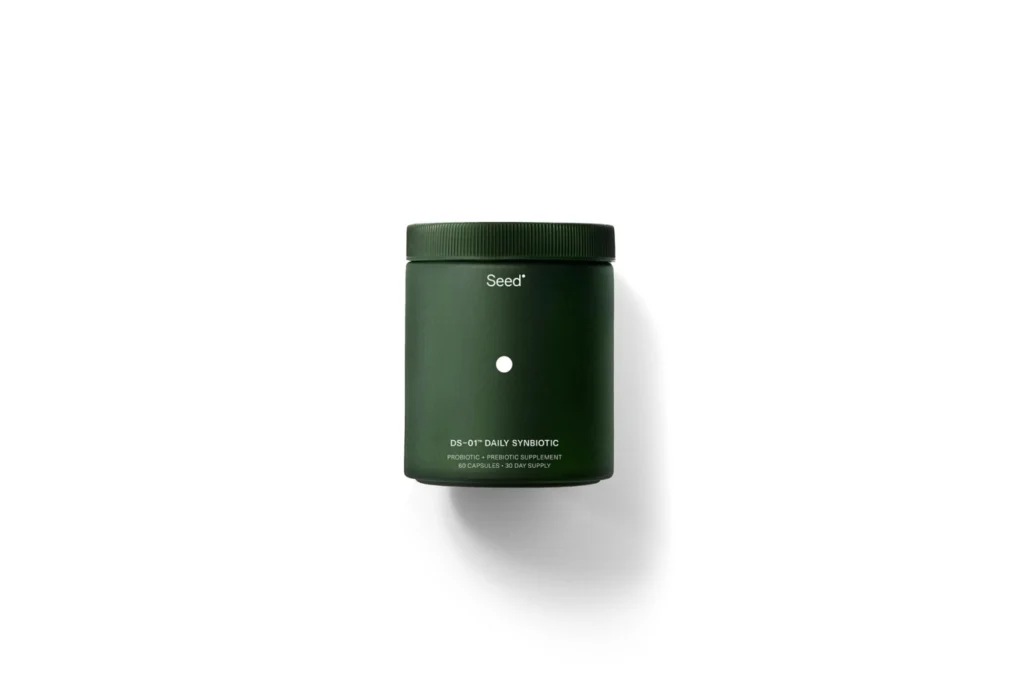
Nature Made: Cost-Effective Supplement Brand Using Plastic
Nature Made, a well-known, budget-friendly brand, relies on plastic containers to keep costs low while maintaining product accessibility. The brand uses high-density polyethylene (HDPE) plastic for its vitamins and supplements, which is lightweight, durable, and inexpensive to manufacture. This helps Nature Made scale its business while offering a broad customer base of affordable options.
Final Verdict: Which is Better for Your Supplement Business?
The decision between glass containers and plastic containers depends on your business priorities, such as cost, sustainability, and brand positioning.
Weighing the Pros and Cons
Glass containers offer benefits like better product protection, chemical stability, and a premium look, but they are more expensive and fragile. Plastic containers, on the other hand, are cost-effective, lightweight, and durable but may have environmental drawbacks and a lower perceived quality.
Recommendations Based on Your Business Goals
If your brand focuses on premium or eco-friendly packaging, glass containers are likely the better choice. They convey quality and sustainability, which can attract luxury or environmentally conscious consumers. However, if your goal is cost-effectiveness and scalability, plastic containers provide a more practical solution, allowing you to maintain affordability and grow your business efficiently.
Choosing the Right Packaging for Your Supplement Business
When deciding between glass containers and plastic containers, it’s essential to weigh the pros and cons. Glass offers superior product protection, a premium feel, and eco-friendly benefits, but it can be fragile and costly. Conversely, plastic is durable, lightweight, and cost-effective, though it may have lower perceived quality and environmental drawbacks. Consider your product needs, budget, and target audience to make the best choice. Selecting the suitable packaging can enhance your supplement business and better meet your customers’ expectations.
Frequently Asked Questions
Which is better for liquid supplements: glass or plastic?
Glass is typically better for liquid supplements because it prevents chemical reactions and offers better protection from UV light.
How can I make plastic containers more eco-friendly?
You can use recycled plastics or biodegradable plastics to reduce the environmental impact of plastic containers.
Are there regulations I need to follow when choosing packaging for supplements?
Yes, supplement packaging must meet FDA guidelines, ensuring that materials like plastic and glass are safe for food and supplements(
Is glass more expensive to ship than plastic?
Yes, glass containers are heavier and more fragile, leading to higher shipping costs than plastic containers.
Can I use refillable packaging for supplements?
Yes, refillable glass containers are a sustainable option, allowing customers to reuse the packaging and reduce waste.
References
- National Institute of Standards and Technology (NIST). (2020). Food Safety. Retrieved from https://www.nist.gov/mml/csd/primary-focus-areas/food/food-safety
- U.S. Department of Agriculture (USDA). (2018). A New Industrial Revolution for Plastics. Retrieved from https://www.usda.gov/media/blog/2018/09/19/new-industrial-revolution-plastics
- U.S. Department of Energy (DOE). (2020). Sustainable Manufacturing. Retrieved from https://www.energy.gov/eere/amo/articles/sustainable-manufacturing
- U.S. Environmental Protection Agency (EPA). (2023). Plastics: Material-Specific Data. Retrieved from https://www.epa.gov/facts-and-figures-about-materials-waste-and-recycling/plastics-material-specific-data
- U.S. Food and Drug Administration (FDA). (2017). Guidance for Industry: Packaging and Labeling Requirements for Dietary Supplements. Retrieved from https://www.fda.gov/regulatory-information/search-fda-guidance-documents/guidance-industry-dietary-supplement-labeling-guide
- U.S. Geological Survey (USGS). (2022). Mineral Commodity Summaries 2022. Retrieved from https://pubs.usgs.gov/periodicals/mcs2022/mcs2022.pdf
- Akdogan, Z., & Guven, B. (2019). Microplastics in the environment: A critical review of current understanding and identification of future research needs. Environmental pollution (Barking, Essex : 1987), 254(Pt A), 113011. https://doi.org/10.1016/j.envpol.2019.113011
- Andrady, A. L., & Neal, M. A. (2009). Applications and societal benefits of plastics. Philosophical Transactions of the Royal Society B: Biological Sciences, 364(1526), 1977-1984. https://doi.org/10.1098/rstb.2008.0304
- Gaiser, R. R., Cheek, T. G., & Gutsche, B. B. (2004). Glass recycling in the labour suite is environmentally sound and economical. British journal of anaesthesia, 92(4), 584–586. https://doi.org/10.1093/bja/aeh103
- Hopewell, J., Dvorak, R., & Kosior, E. (2009). Plastics recycling: challenges and opportunities. Philosophical transactions of the Royal Society of London. Series B, Biological sciences, 364(1526), 2115–2126. https://doi.org/10.1098/rstb.2008.0311
- Ibrahim, I. D., Hamam, Y., Sadiku, E. R., Ndambuki, J. M., Kupolati, W. K., Jamiru, T., Eze, A. A., & Snyman, J. (2022). Need for sustainable packaging: An overview. Polymers, 14(20), 4430. https://doi.org/10.3390/polym14204430
- Robertson, G.L. (2012). Food Packaging: Principles and Practice, Third Edition (3rd ed.). CRC Press. https://doi.org/10.1201/b21347
